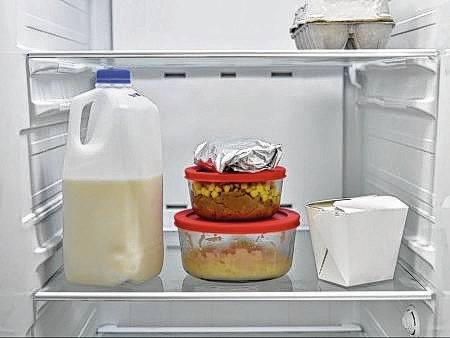
Question: My dad absolutely hates to waste food, so he tends to keep leftovers until they smell bad. Until then, they are safe to eat, as far as he’s concerned. Is that true?
Answer: No, not really.
The bacteria that cause foodborne illnesses aren’t easily detectable to the naked eye nor by smell because these organisms do not affect the look, smell or taste of foods, according to the U.S. Department of Health and Human Services.
The safe storage time for leftovers depends on what foods are in question and also how the foods are stored. Generally, foods such as wet salads (egg, chicken, ham, tuna and macaroni) can be eaten safely up to five days after opening if stored correctly in a refrigerator. Foods like cooked meat or poultry and pizza are safe to eat within three to four days after preparation if stored correctly in a refrigerator.
For more detailed information, you can refer to the safe food storage chart offered by Foodsafety.gov. While some foods can safely be consumed after the best-by date label like dried and canned foods, leftovers may support the growth of pathogenic bacteria and should be eaten quickly or discarded.
Being aware of general food safety practices can help consumers avoid a foodborne illness, says Abigail Snyder, an assistant professor and food safety field specialist in the College of Food, Agricultural, and Environmental Sciences (CFAES) at The Ohio State University.
Annually, some 48 million people get foodborne illnesses, leading to 128,000 hospitalizations and 3,000 deaths each year, according to estimates from the Centers for Disease Control and Prevention.
Some other big myths about food safety, according to Foodsafety.gov, include:
Leaving food out of temperature control (e.g., refrigeration) for more than an hour or two is not a good idea because bacteria grow rapidly at room temperature when food reaches the temperature “danger zone” — between 40 and 140 degrees. While it may be tempting to think that re-heating food that’s been in the danger zone for too long will make it safe, that is incorrect. Some toxins produced by the bacteria can withstand cooking and can lead to illness.
Washing raw meat, like chicken, under running water gets rid of pathogenic bacteria. This is false. Rinsing raw meat actually can increase your chance of getting a foodborne illness because the pathogenic bacteria can be spread to your sink, countertops and other kitchen surfaces. The only way to kill the bacteria from raw meat is through proper cooking times to reach the recommended internal temperature. More information on safe minimum cooking temperatures can be found at foodsafety.gov/keep/charts/mintemp.html.
Not washing your hands before eating or after food preparation, especially after handling raw foods. Bacteria that can cause numerous illnesses can survive on many surfaces, including your hands. Therefore, you should always wash your hands for at least 20 seconds with soap and warm, running water before and after handling food.
Heeding basic food safety practices can help prevent serious illnesses. With September designated as National Food Safety Education Month, now is a good time to learn more. Additional information on food safety can be found on the Centers for Disease Control and Prevention website at cdc.gov/nceh/ehs/News/Features/food-safety-month-2013.htm.


